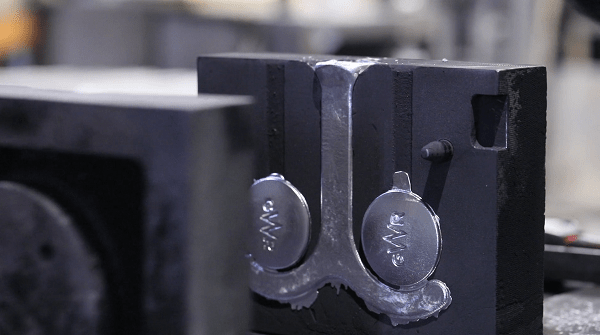
Die casting is one of the most widely used casting processes but what is the difference between Gravity Die Casting and Pressure Die Casting? Both are casting processes used by NovaCast, so we are well placed to explain the differences and discuss the selection criteria.
Both forms of Die Casting employ a metal mould into which non-ferrous molten metal, usually an alloy of Aluminium, Zinc, Magnesium, Lead, Tin or Copper, is introduced. The main difference between Gravity Die Casting (also known as Permanent Mould Casting) and Pressure Die Casting is the way that molten metal arrives in the mould. In Gravity Die Casting, the molten metal is poured into the mould from above, which fills from the bottom up, purely under gravitational force. In Pressure Die Casting, the molten metal is injected into the mould under considerable pressure (between 1500 and 25,400 psi). This pressure is maintained until the casting solidifies.
The high-pressure filling of the die in Pressure Die Casting allows the alloy to be injected very quickly and, coupled with the highly automated nature of the process, very high productivity can be achieved while the potential for human error is reduced. As Gravity Die Casting relies on gravity to fill the mould, the process is slower and is, therefore, less suited to long production runs.
The requirement to deliver molten metal under pressure into the mould in a highly automated process, makes Pressure Die Casting complex and expensive to set up. There can also be a considerable difference in the tooling costs for the moulds as Pressure Die Casting moulds need to be made from hardened Steel and will often require internal cooling channels to dissipate heat quickly. By contrast, Gravity Die Casting moulds can be made from Cast Iron and the lower cycling rates prevent heat build-up in the mould and allow rapid chilling of the casting. Gravity Die Casting also has the advantage that sand cores can be used to create internal voids that are not possible with Pressure Die Casting.
There is a difference in the quality of casting that can be achieved from each process. The rapid filling of the mould under pressure, allows Pressure Die Casting to achieve very precise and complex castings that are dimensionally accurate and with thinner walls. As-cast surfaces can be very smooth, which reduces secondary machining. While Gravity Die Casting can’t match these attributes, the slower speed at which molten metal enters the mould does mean that less folding and turbulence occurs so less air is trapped in the casting. This gives Gravity Die Casting the advantage where subsequent heat treatment of the casting is required although Pressure Die Castings are stronger in the as-cast state.
It is clear then that Pressure Die Casting is considerably more expensive to set up and, due to the complexity of the casting process, is less flexible than Gravity Die Casting. The potential for high productivity, however, means that Pressure Die Casting is much better suited to stable, high-volume production runs where the unit cost of castings can be very low.
The choice of casting process will often be dictated by a host of design specifications and the geometry of the component to be cast together with economic factors such as the production run. Sometimes Gravity Die Casting will be the right solution and sometimes a project will be better suited to Pressure Die Casting. That’s why we offer both options at NovaCast together with many others including Sand Casting, Investment Casting, Lost Foam Casting and Shell Mould Casting.
If you would like to discuss the most appropriate casting solution for your project, call a member of NovaCast’s team on +44 (0) 1225 707466, send us a message here or email sales@novacast.co.uk.